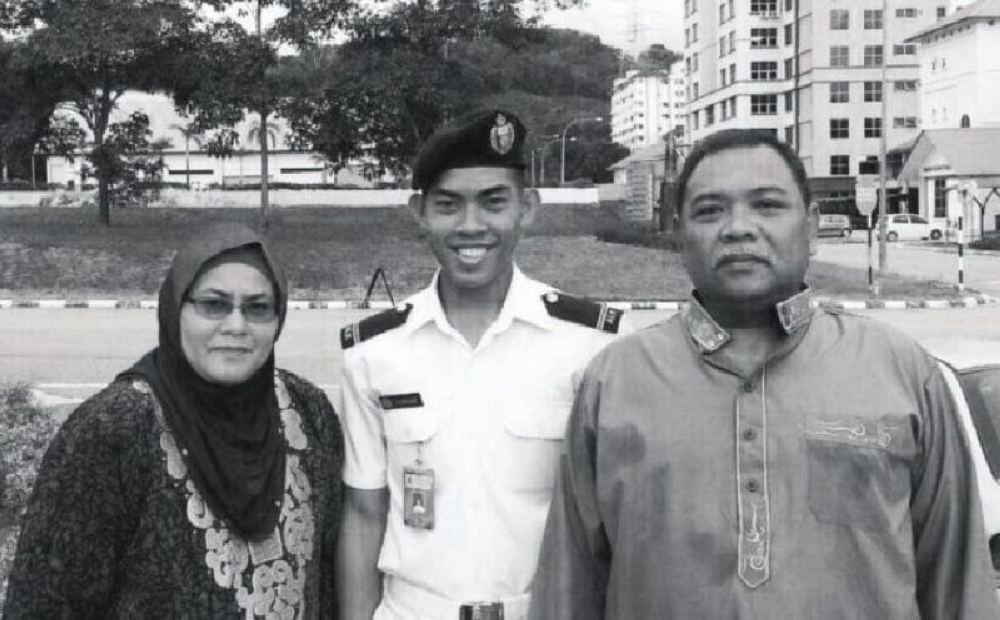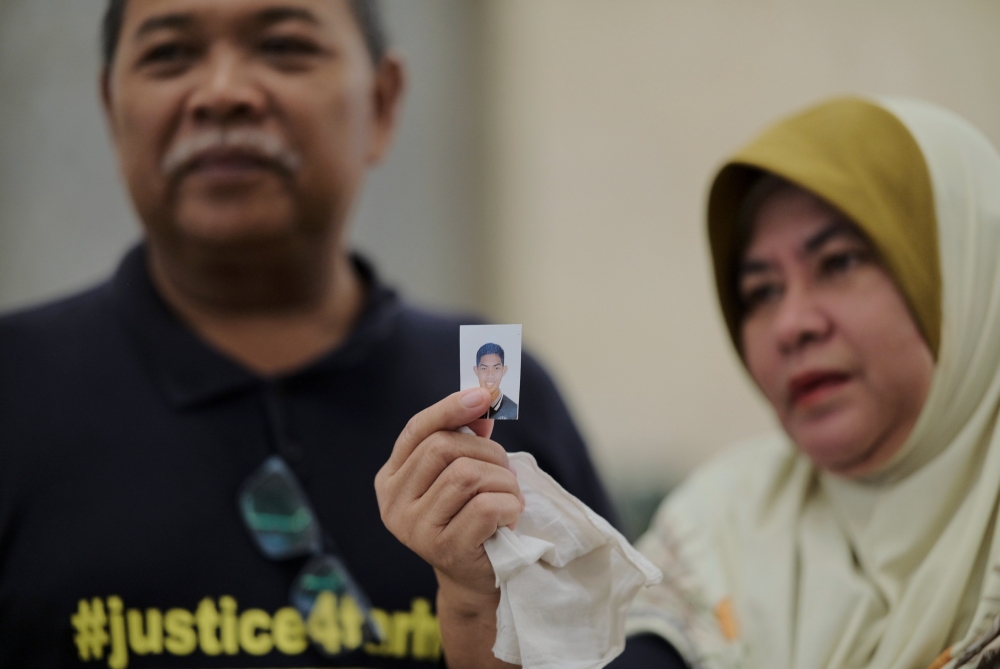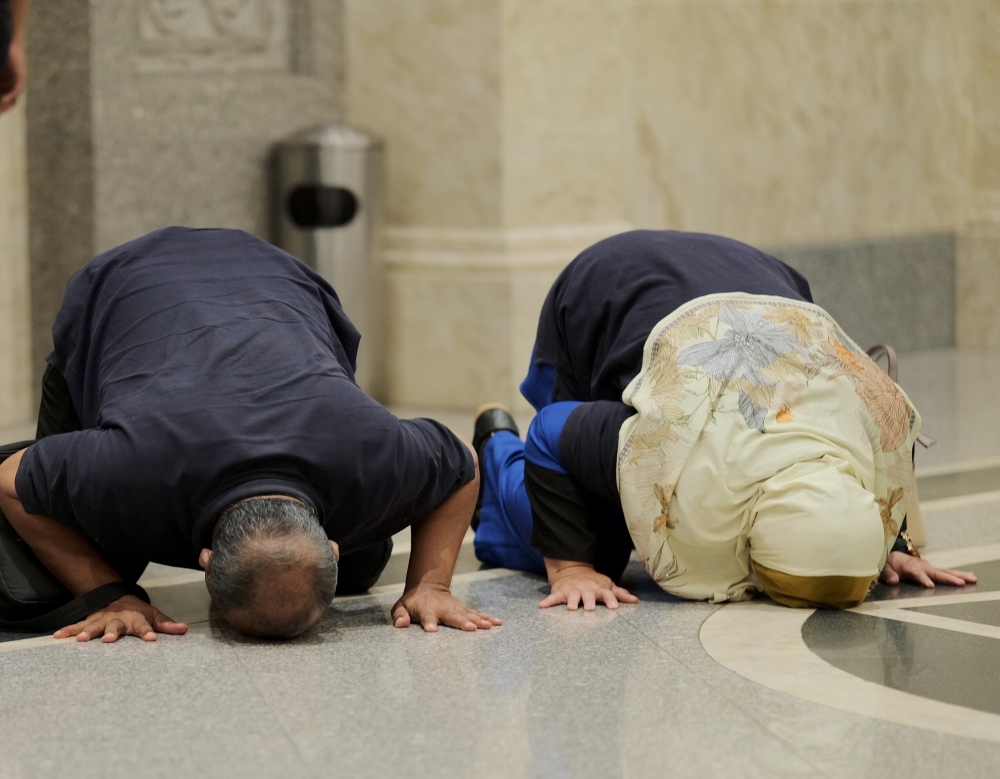- Hospital’s forensic expert found Zulfarhan’s body had 90 burn marks from a hot iron; concluded severe burns caused his death
- Court of Appeal said the six former university students must hang as their inhumane and cruel actions caused Zulfarhan’s death
- Court of Appeal did not believe the six’s defence and rejected their appeals against their conviction
KUALA LUMPUR, July 25 — The Court of Appeal on Tuesday decided that six former Universiti Pertahanan Nasional Malaysia (UPNM) students will be hung to death instead of being jailed for 18 years over Navy Cadet Officer Zulfarhan Osman Zulkarnain’s 2017 murder.
Who are the six given the death sentence?
The six accused persons (OKT, Bahasa Malaysia for Orang Kena Tuduh) were Zulfarhan’s fellow students: Muhammad Akmal Zuhairi Azmal (OKT1), Muhammad Azamuddin Mad Sofi (OKT2), Muhammad Najib Mohd Razi (OKT3), Muhammad Afif Najmudin Azahat(OKT4), Mohamad Shobirin Sabri (OKT5), and Abdoul Hakeem Mohd Ali (OKT6).
Here’s a quick summary of the Court of Appeal’s 93-page judgment by judge Datuk Hadhariah Syed Ismail and agreed by judges Mohamed Zaini Mazlan and Datuk Azmi Ariffin:

Key facts about Zulfarhan’s torture and death in 2017
- Zulfarhan was accused of stealing OKT1’s laptop, but never admitted stealing it despite torture.
- In court, OKT1 admitted he had no proof Zulfarhan stole his laptop, apart from a student’s claim that his bomoh father said Zulfarhan was the one who took the laptop.
- Zulfarhan was tortured at UPNM’s Jebat hostel block at the Perdana Sungai Besi camp, Kuala Lumpur on three occasions:
- (a) May 21, between 2.30am to 5.30am, he only had pants on while being hit by multiple persons in room 3-05;
- (b) May 22, between 1.30am to 4.30am, only had boxer shorts on while being hit by multiple persons in room 4-10;
- (c) May 22, between 4.45am to 5.45am, in room 4-10 — while his hands and legs were tied — OKT1 to OKT5 pressed a hot iron on his body after OKT6 gave instructions.
- Accused persons brought Zulfarhan to a private clinic in Bangi twice (May 27 and May 31), where the doctor treated wounds twice and also wrote a referral letter twice for him to be sent to Hospital Serdang. Accused persons did not bring Zulfarhan to the hospital.
- On June 1, Zulfarhan was brought to Hospital Serdang where he was pronounced dead.

Why the Court of Appeal said the six should hang for murder
The High Court on November 2, 2021 decided to convict the six accused persons under the Penal Code’s Section 304(a) for culpable homicide not amounting to murder — which can be punished by a maximum 30 years’ jail and a fine. The High Court sentenced the six to 18 years’ jail.
The prosecution wanted the Court of Appeal to restore the murder charges which the six were originally facing, and also wanted them to be sentenced to death.
The six accused persons appealed against the High Court’s conviction by arguing they had no intention to commit murder, and that the charge against OKT6 is defective as it did not state how he had abetted the crime. The six also appealed for their 18-year jail term to be reduced to 10 to 12 years.
But the Court of Appeal restored the original murder charge under the Penal Code’s Section 302 — which can be punished with either a death penalty; or a jail term of between 30 to 40 years and at least 12 strokes of whipping.
While the Court of Appeal has the discretion to choose between a death sentence or imprisonment for the six, the judges were unanimous in their decision that “only one” sentence was appropriate.
The Court of Appeal listed nine factors which contribute to a heavy penalty for the six, as summarised below:
- Zulfarhan was innocent. Had been beaten by many before the iron was pressed on him.
- OKT1 to OKT5’s actions were cruel as Zulfarhan’s hands and legs were bound while they pressed the iron on him. Their actions in pressing an iron over his whole body including his private parts showed their malicious intent, cruelty, inhumanity and lack of compassion towards their fellow student
- The accused persons continued pressing the iron on Zulfarhan’s entire body (except only his face) resulting in 90 burn marks, despite OKT 1 to OKT 6 hearing his multiple cries and seeing him writhing in pain
- They hid Zulfarhan after he was tortured with a hot iron to avoid higher ups from learning about their criminal actions
- Did not bring Zulfarhan to Hospital Serdang for medical treatment despite doctor’s advice and two referral letters to hospital. Blaming Zulfarhan in the incident when all this was a result of OKT 1 to OKT 6’s cruel actions
The Court of Appeal agreed with the prosecution that the way Zulfarhan was murdered shocks society’s collective conscience, calling this case the “rarest of the rare” involving a cruel crime that is very dangerous to the public and must be stopped.

Why the Court of Appeal overturned the High Court’s earlier decision
The High Court decided to convict the six of the lesser charge of culpable homicide (Section 304(a)), as it felt it was bound by previous court decisions which require the identifying of the most serious injury to show intent to cause death in order to convict a person of murder (Section 302).
The High Court said it is not known which injury caused Zulfarhan’s death and that it had not been proven without beyond reasonable doubt that Zulfarhan’s injuries were ordinarily sufficient to cause death.
But the Court of Appeal said the High Court’s decision was wrong, saying the Penal Code’s Section 300(c) only required the prosecution to prove that the accused persons had intent to cause bodily injury and that the prosecution did not need to prove they had the intent to cause bodily injury which is ordinarily sufficient to cause death.
The Court of Appeal said the prosecution had proven all four elements of the murder charge against OKT 1 to OKT 5 beyond reasonable doubt, and that this is why the five are convicted of murder.
This is because Zulfarhan had died due to his injuries which were caused by the five’s actions which were intended to cause injury to him with “severe burns”, and as his injuries of “severe burn” are ordinarily sufficient to cause death.
Among other things, the Court of Appeal did not believe OKT 1 to OKT 5’s testimonies that all of them had allegedly only pressed the iron a collective eight times about one second each time on Zulfarhan’s body, as there were 90 burn marks (which the court said would support witnesses’ testimony that it had been carried out for an hour if each press took one second) and no other persons had carried out the action of pressing the iron.
The Court of Appeal also accepted the testimony of the forensic expert — who had examined Zulfarhan’s body — that the burn wounds could ordinarily cause death, deciding that it is conclusive that his cause of death is the burn wounds.
The Court of Appeal also found that the prosecution has proven OKT 1 to OKT 5’s common intention to commit the crime through their actions of pressing the iron on Zulfarhan’s body.
As for OKT6 who was charged with abetting the murder (punishable under the Penal Code’s Section 109 read together with Section 302), the Court of Appeal said he is also guilty of murder.
This is because even though he did not press the iron on Zulfarhan’s body, the Court of Appeal said OKT 6 was also involved in OKT 1 to OKT 5’s crime which caused the death as he had instructed them to press the iron.
The Court of Appeal rejected OKT6’s defence — where he said he did not hold the iron and did not ask the five to press the iron on Zulfarhan’s body — as a bare denial and as not raising a reasonable doubt in the prosecution’s case.






















